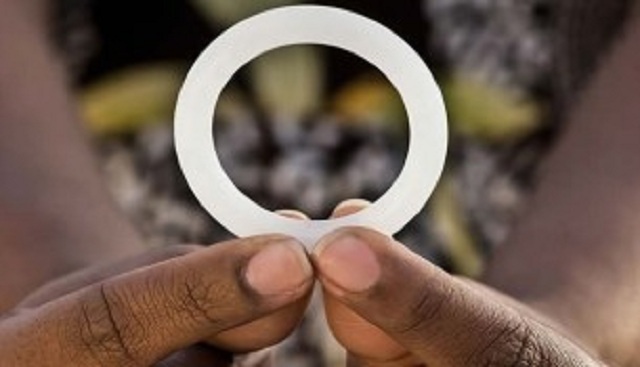EDITORIAL COMMENT: Make vaginal ring more accessible to the majority

They say HIV and Aids in Africa, like poverty, has a woman’s face.
Because of biological factors, their generally inferior economic status and the resulting power relations that favour men against the fairer sex, HIV and Aids affect women more than men.
According to the Global Coalition on Women and Aids, in sub-Saharan Africa, the epicentre of the epidemic, women constitute approximately 57 percent of adults living with HIV and 75 percent of young people living with HIV on the continent are young women aged 15-24.
Talking about biology, studies have established that the large surface area of the woman’s reproductive organ makes her twice as likely as a man to acquire HIV from an infected partner through unprotected sex. The vaginal canal has soft tissue too that makes a woman more susceptible to infection than a man.
Women’s economic and social dependence on men, Unicef asserts, limits her power to refuse sex or to negotiate for safer sex. African traditional culture puts men at the top stratum of society and women down, with girls occupying the most inferior position. At the same time and partly because of the foregoing, women and girls have poorer education, have less-paying jobs and only a few of them are in key decision-making positions politically or in the corporate sector.
Forced sex, transactional sex, and marriage to much older men increase women’s risk of infection in many places around the world.
Violence against women and girls also contributes to the feminisation of the epidemic on the continent.
In addition, women frequently take the responsibility of caring for their relatives and husbands when they fall sick due to Aids.
All these are evidence-based positions that highlight that women and girls are more affected by HIV and Aids than men and boys.
Therefore scientists, non-governmental organisations and governments have, since the start of the epidemic in the late 1980s and later when its greater impact on women was detected, been scratching their heads and spending millions searching for gender-sensitive ways to prevent the scourge’s continuing impact on the fairer sex.
They seek not only to enhance their socio-economic status to help them gain the confidence to negotiate for safer sex but also to come up with a physical tool that is controlled by a woman in asserting her sexual and reproductive rights.
The female condom was an attempt at the latter. Hailed at first, the femidom soon lost popularity. Men and women don’t like it for its relative bulk and the difficulty in putting it on. In addition, they say it causes significant discomfort during use.
This week, as the search for that woman-focused solution to HIV infection continues, scientists announced the development of a vaginal ring containing an anti-retroviral drug, dapivirine, which, if correctly and consistently used, can reduce her risk of HIV infection by up to 61 percent.
Between 2012 and 2015 2,600 women from Zimbabwe, Malawi, Uganda and South Africa took part in two complementary studies that brought up the ring.
Dr Jared Baeten, a member of the study team said:
“The HIV prevention field for women has struggled in the last few years – at times the glass had seemed almost completely empty. Now, for the first time, we have two trials demonstrating that a female-controlled HIV prevention method can safely help reduce new HIV infections. I’m optimistic about what these results might mean for women worldwide.”
Will the ring, which a woman can insert in her sexual organ before sex, prove to be what she, anti-Aids activists, scientists and Africa have been waiting for?
We hope so. But the International Partnership for Microbicides (IPM) and the Microbicides Trials Network (MTN) have, as they said on Monday when proclaiming the apparent breakthrough, to continue their research for the vaginal ring to be more affective.
As we welcome it, we urge its developers and those who funded the research to refine it where necessary and make it available in the high HIV burden countries in sub-Saharan Africa promptly. They have to make the ring affordable, like the male condom otherwise poor access to it and issues of affordability can undermine its efficacy, thus perpetuate the feminisation of the Aids epidemic and women’s suffering.
As with all new interventions to human challenges, we expect initial resistance to the vaginal ring, but with massive publicity and social marketing campaigns the resistance should be overcome.
The distribution of the device must show awareness to the social barriers that already make it difficult for women to actively access and acquire condoms in a supermarket, for example. We suggest therefore that the ring’s distribution be less through the open market but more through women’s groups and clubs and places where they often congregate.
On its own, however, the ring cannot be the magic bullet in defeating HIV and Aids. It must be used side-by-side with practices and tools that are already available.
The male condom must continue to be used. On this, we await expert advice on whether the ring can be used concurrently with the male condom.
Access to anti-retroviral drugs, post-exposure prophylaxis and voluntary male circumcision should be expanded. Programmes to improve women’s socio-economic status that expose them to HIV infection should be intensified.
Purists will also add that women and men of course, have to abstain from risky sexual behaviour and be faithful to their partner.
A strong message has to go to African governments as well for them to invest more in health research and the health of their people, not to always wait for Europe and America to do it for us.











Comments